Physics
Sign up for our newsletter
We summarize the week's scientific breakthroughs every Thursday.
-
 Materials Science
Materials ScienceNew wetsuit designs offer a layer of protection against shark bites
By weaving Kevlar or polyethylene nanofibers into standard neoprene in wetsuits, researchers found ways to limit injury during rare encounters with sharks.
By Carly Kay -
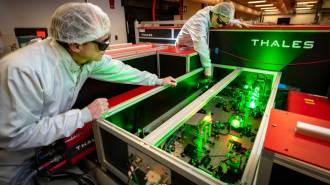 Particle Physics
Particle PhysicsLasers made muon beams, no massive accelerator needed
The advance hints at the possibility of portable muon-making devices that could help peer through solid materials for hidden contraband.
-
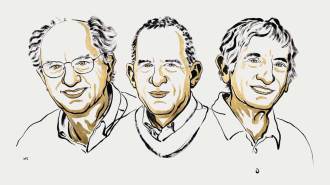 Quantum Physics
Quantum PhysicsDiscoveries that enabled quantum computers win the Nobel Prize in physics
In the 1980s, John Clarke, Michel Devoret and John Martinis demonstrated quantum effects in an electric circuit, an advance that underlies today’s quantum computers.
-
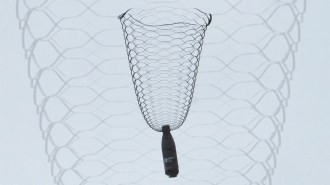 Physics
PhysicsThese parachutes unfurl thanks to the Japanese art of kirigami
Parachutes inspired by Japanese paper cutting unfurl automatically and fall more predictably than standard parachutes.
-
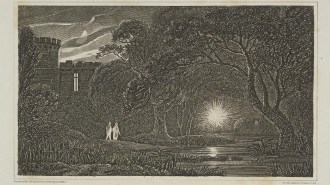 Physics
PhysicsHere’s what might spark ghostly will-o’-the-wisps
Chemists have discovered tiny zaps of electricity moving between “swamp-gas” bubbles. Could they ignite methane gas to glow as dancing blue flames?
By Laura Allen -
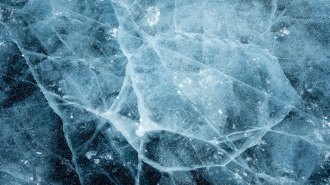 Physics
PhysicsIce is more flexible than you think, a new nano-movie shows
Scientists have filmed nanoscale ice crystals adapting to trapped air bubbles without losing structural integrity.
-
 Particle Physics
Particle PhysicsA primordial black hole may have spewed the highest energy neutrino ever found
The Big Bang may have spawned these theoretical black holes, whose lives are thought to end in a burst of extremely energetic particles.
-
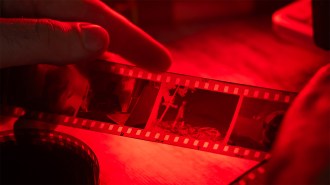 Chemistry
ChemistryA new book explores the link between film giant Kodak and the atomic bomb
In Tales of Militant Chemistry, Alice Lovejoy traces how film giants Kodak and Agfa helped produce weapons of war during the 20th century.
By Anna Demming -
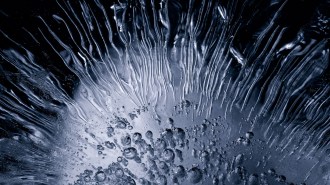 Materials Science
Materials ScienceSalt can turn frozen water into a weak power source
Experiments reveal that when slabs of salty ice are strained, electricity is generated, though practical uses are still a long way off.
By Nikk Ogasa -
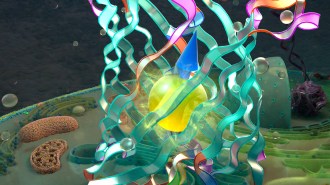 Physics
PhysicsScientists made a biological quantum bit out of a fluorescent protein
Researchers could use quantum effects to develop new types of medical imaging inside cells themselves.
- Physics
A ‘ringing’ black hole matches scientists’ predictions
Gravitational waves emitted after two black holes coalesced agree with theories from physicists Stephen Hawking and Roy Kerr.
-
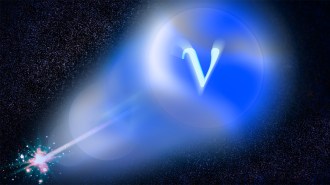 Particle Physics
Particle PhysicsThis laser would shoot beams of neutrinos, not light
The subatomic particles called neutrinos are famously elusive. But an unconventional trick could make a laser beam of the aloof particles.